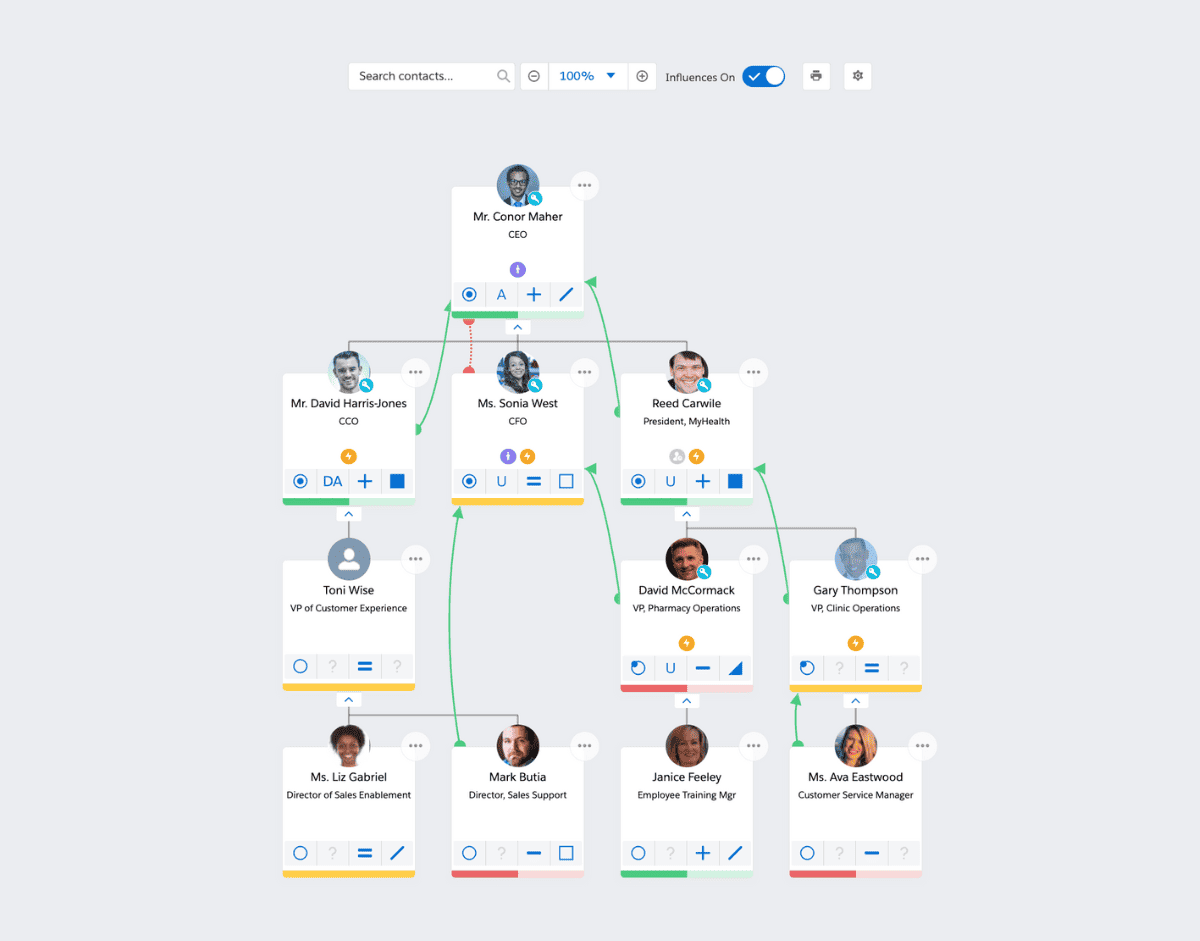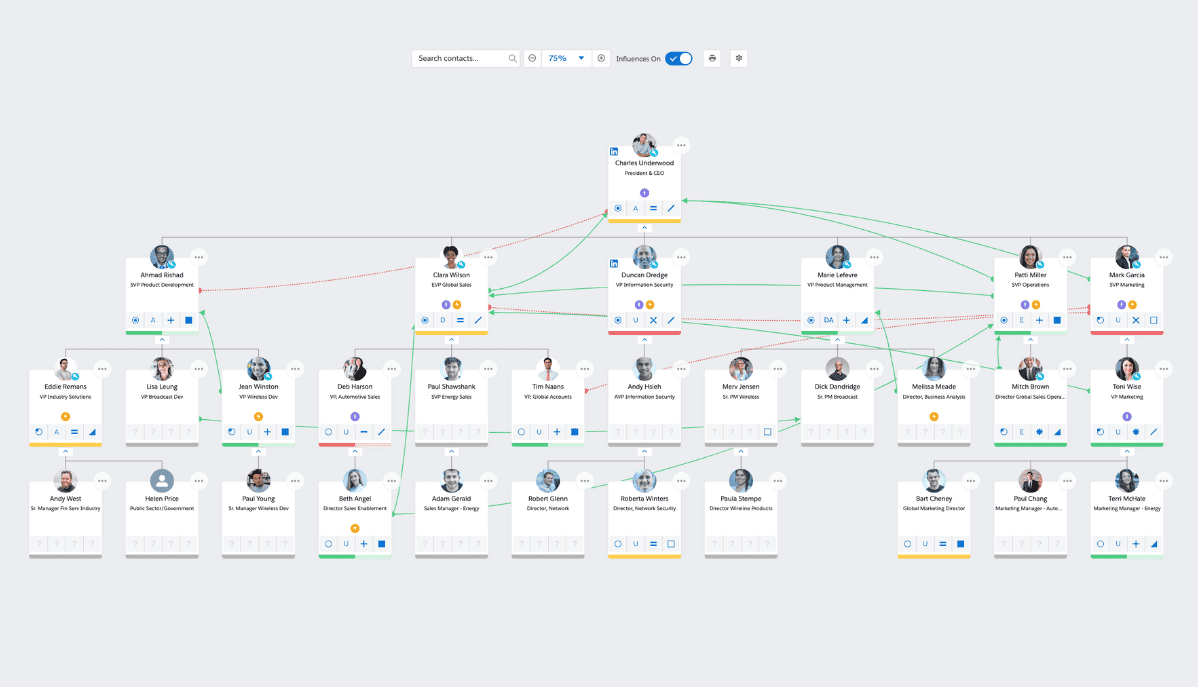Account planning and effective account management strategies are about much, much more than your key accounts. That said, any account manager worth their salt has a strategy for their key accounts. For this reason, key account management specifically should almost always look different from strategies focused on smaller accounts during account planning processes.
There are many reasons for this. While all your accounts are important, key accounts are where most organizations receive their greatest revenue. Attracting them is an entire process. Keeping them happy and retaining them as customers is another challenge.
No matter how you slice and dice it, however, one thing remains true: putting the relationship first – while critical in any sales interaction – is of unparalleled importance when managing key accounts.
In this guide, we will dive into some of the differences between key accounts, as well as look into some effective strategies leading sellers are using to manage them.
First, What is a Key Account?
Everyone calls their key accounts something different. However, there is one commonality between the terms, no matter what you call them. Your key accounts are your most desired customers. Often, these accounts are your biggest spenders, requiring the most attention, care, and the most complex strategies to engage correctly.
One effective way sellers can make sure they are hitting all the right notes with all the right people in their key accounts is through relationship mapping.
(For more info on how your team can leverage relationship mapping, checkout our guide.)
Suffice it to say that a sales relationship map for a key account looks a lot different than it does for smaller accounts. See a side-by-side comparison for an example.

Sales map example for smaller accounts.
As you can see, buying groups are larger in key accounts and often require more members and attention from the entire revenue team – especially at the executive level.

Sales maps for key accounts tend to be quite complex with many stakeholders.
This might look a little overwhelming at first – but never fear! With the right process in place, you can overcome the many challenges and establish yourself as a trusted advisor to your most desired customers.
Next Let’s Investigate the Key Account Management Process
To be effective at managing key accounts, sellers need a strong and repeatable process in place. As they move through this process with their revenue team, it’s important that they document their findings and insights. These will be integral when building out an account plan that enables sellers to achieve their desired outcomes.
An ideal account management process usually takes shape like this:
- Identifying target accounts
- Segmenting key accounts
- Developing account plans
- Executing account plans
- Performing a whitespace analysis
- Measuring results from account management strategies
See our account management guide for more info on each of these steps.
Account Planning is the Backbone of Key Account Management
As you and your team move through the key account management process, one thing necessary to ensure success is leveraging effective account planning best practices. Sellers will gather vital data about the account in question, including the people in play, their goals, obstacles, challenges, decision-making process, purchasing criteria, and beyond.
Just a small warning as you head down this path, however: account planning is not easy. It requires motivation, focus, and consistency to get it right. This is why so many attempts at effective account planning go wrong. When done correctly, however, it can help your team to build trust and grow revenue.
Here are a few core components necessary to include in your account planning process – specifically for key accounts.
- Calibration
- Cadence
- Coaching
- Communication
- KPIs
To get a more in-depth look at how these core components of account planning factor into your key account management strategy, take a look at our account planning template.
Five Tips for Key Account Management From Sales Leaders
Account planning for key accounts has proven benefits – chief among these being its uncanny ability to build relationships and grow revenue. But don’t take our word for it – hear it from sellers like you.
In our new book, Not Just Another Vendor, we compile the stories of how real sales leaders are building relationships and growing revenue in key accounts through consistent account planning practices. Here are a few tips directly from them on how account planning has helped them grow revenue in their most strategic accounts.
Key Account Management Means Understanding Your Customer’s Business as Well as They Do.
Todd Adair, Southeast Zone Commercial Manager, GE Healthcare, knows the importance of deeply understanding his strategic customers’ business. By strategically deploying account planning throughout his team, he outperformed traditionally managed accounts by nearly double percentages of revenue growth.
To keep himself centered, and ensure he is always moving forward with account planning and not back, he often thinks back to a conversation he once had with the CEO of a major healthcare system. “How do you get back into my office?” the executive had asked, “Just two things. One: you have to understand my business as well as I do, if not better. Two: you have to help me get where I need to go.”
Todd says he knows it sounds simple. “But if it were easy, everyone would do it.”
(You can read more about Todd’s story in the first chapter of Not Just Another Vendor)
Key Account Management is All About Delivering Value
“It’s not just about focusing on the opportunities of the deals, it’s about focusing on a bigger agenda to help our customers deliver to their customers in the right way.” – Jason Cooper, Head of Sales Excellence, Johnson Controls
Effective account management focuses on so much more than the immediate transaction. All too prevalent in the bygone era of lone wolf sellers, when sellers would act alone to close deals and move on, modern buyers are looking for relationships when it comes to complex, B2B sales, and the data backs this up.
To deliver value for key accounts, sellers must ensure they deliver value in every interaction.
Read this guide on how to build effective relationships and deliver value to your customers.
Key Account Management is All About Winning, Retaining, and Growing Revenue
Account planning is about a lot more than simply growing revenue in key accounts – it’s also about landing new business and new customers.
One way that Scott Jackson has seen success in his illustrious career (one that spans from Army Ranger to Sales Executive and, in its third act, Sales Enablement) is in focusing on delivering key insights to help win new deals, retain key accounts, and grow net new opportunities.
“It isn’t just about deals. It’s about figuring out how we can create an incredible customer experience.”– Scott Jackson Senior Director, Sales Enablement, Comcast Business.
You Should Have Different Strategies for Different Accounts
Once you’ve established your key accounts, enterprise accounts, and mid-market accounts, you can begin strategizing on how best to approach them.
One strategy industry leaders have leveraged to make this work is to take their learnings from their key accounts and right-size them for smaller accounts. “This worked for them; maybe it will work for you?”
This is a great way to build trust with prospective accounts, but it’s also an excellent way to get the most out of your efforts.
Key Account Management Software is the Bedrock for Your Success
“I’ve never seen an organization put a good account planning practice in place without good software to support them.” – Phil Trapani – Upland Altify
Behind every elite sales team, there’s an equally elite tech stack.
It’s usually people who get the glory when we talk about key account management —and rightly so. After all, it’s the relationships you build, both internally and with your customers that allow you to break away from being “just another vendor.”
But to empower your team to do the hard and rewarding work of managing key accounts, you must first give them the tools for the job.
The magic of account planning technology comes from its ability to translate the big account planning principles we’ve been talking about into real, day-to-day activities your revenue team can carry out. But not all software is created equally.
Here are the five most crucial components to consider when choosing the most effective key account management software.
The Best Key Account Management Software for Your Team Will:
- Keep sellers on track by bringing your organization’s best practices into their daily sales motions
- Encourage collaboration across the revenue team by centralizing information and offering actionable guidance
- Foster more and better relationships by helping teams see who they know, who they should know, and what key members of the account want and need
- Drive more pipeline and higher-velocity sales by visualizing whitespace, insights, and deal progress
- Make sellers’ jobs easier and more efficient because it is simple to use and quick to adopt across the organization
Today, the line between sales and key account management has forever been blurred. In B2B sales, that’s probably a good thing. It’s not enough to seek to close the deal and just move on. To do business with your most valued customers, you need to understand their business as well as they do. Through consistently delivering value to your customers, you can ensure that your team will not only close new marquee accounts but will also retain and grow those accounts over time.
Plenty of other sellers have taken up the challenge and succeeded thanks to a combination of sales methodology, account planning best practices, and elite key account management software. You can, too.

